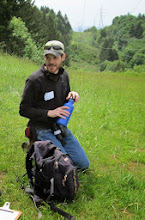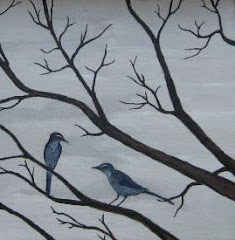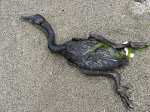
This year, I checked out 118 nests, about twenty fewer than last year. These nests were built by 39 species of birds, and, as usual, the three most common species were American robin (26 nests), bushtit (18 nests), and barn swallow (9 nests).

In February, I found the first nests of the year which were built by great horned owls (with nestlings pictured above) and great blue herons. I found a few bushtit nests in March and many robin nests in April.

In mid April, I was able to view and paint an Anna's hummingbird nest built in a small oak tree a few blocks away.

In May, I viewed my first-ever cinammon teal and black-headed grosbeak nests.

As in previous summers, the latest nesting species was the barn swallow. The last active nest of which I found built above the door of an outhouse along Tillamook Bay.
I was able to determine the fates of only 39 nests. Of these, 23 were successful.

Sixteen nests, including this dove's, were not.

Of robin nests with known fates, five nests, like the one above, were successful while seven failed.

I had a hard time determining the fates of bushtit nests, because their contents are encased in a sock-like mass of lichen and spiderwebs.
Douglas fir trees were the substrates in which most nests were built (18), followed by buildings (16), cedars (9), snags (4), and ash trees (4).
I find that nests are the clearest windows into the biology of wild animals, so I am already looking forward to next year's crop. Until then I have plenty of gull, cloud, and college football watching to keep me busy!






No comments:
Post a Comment